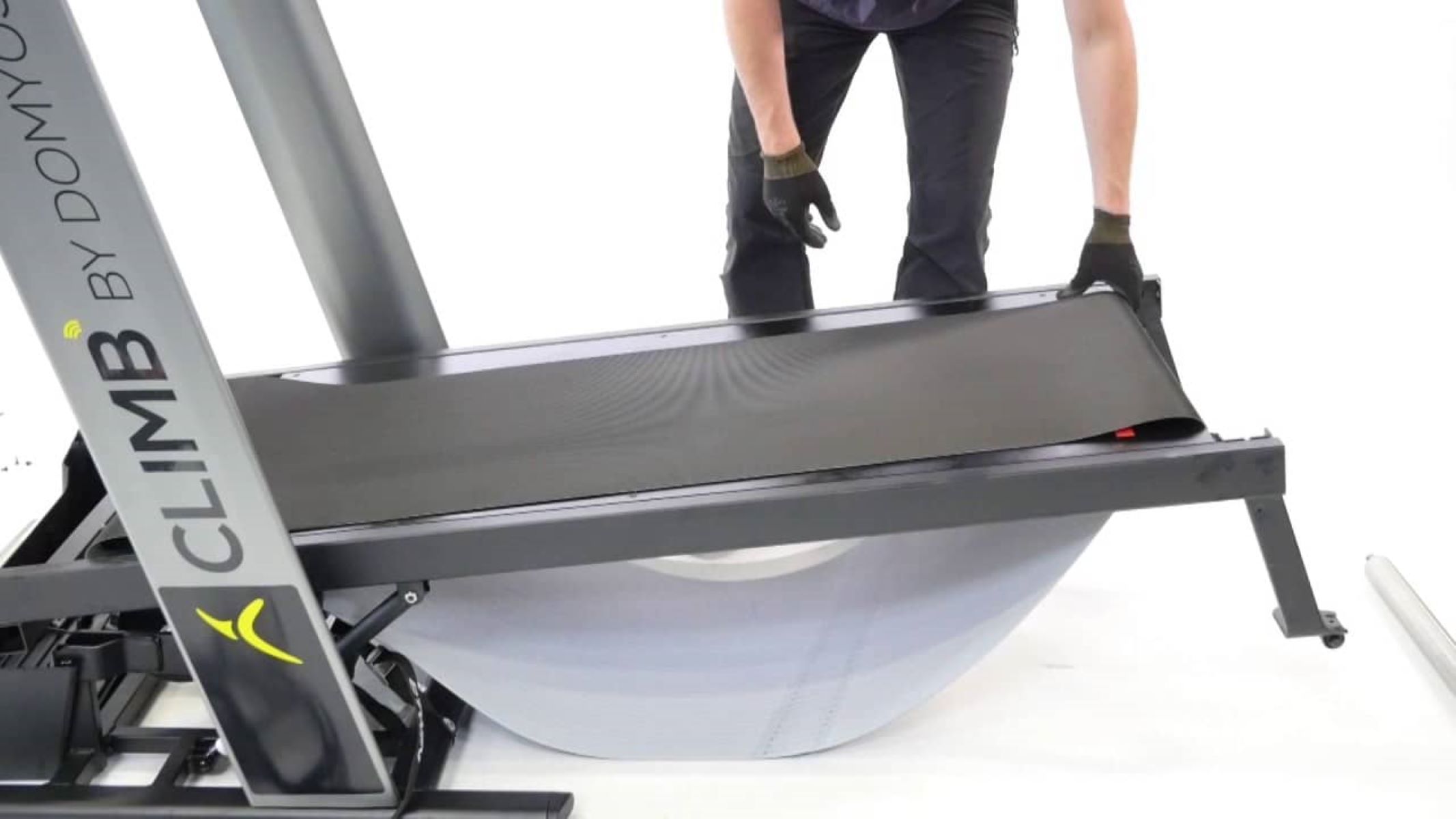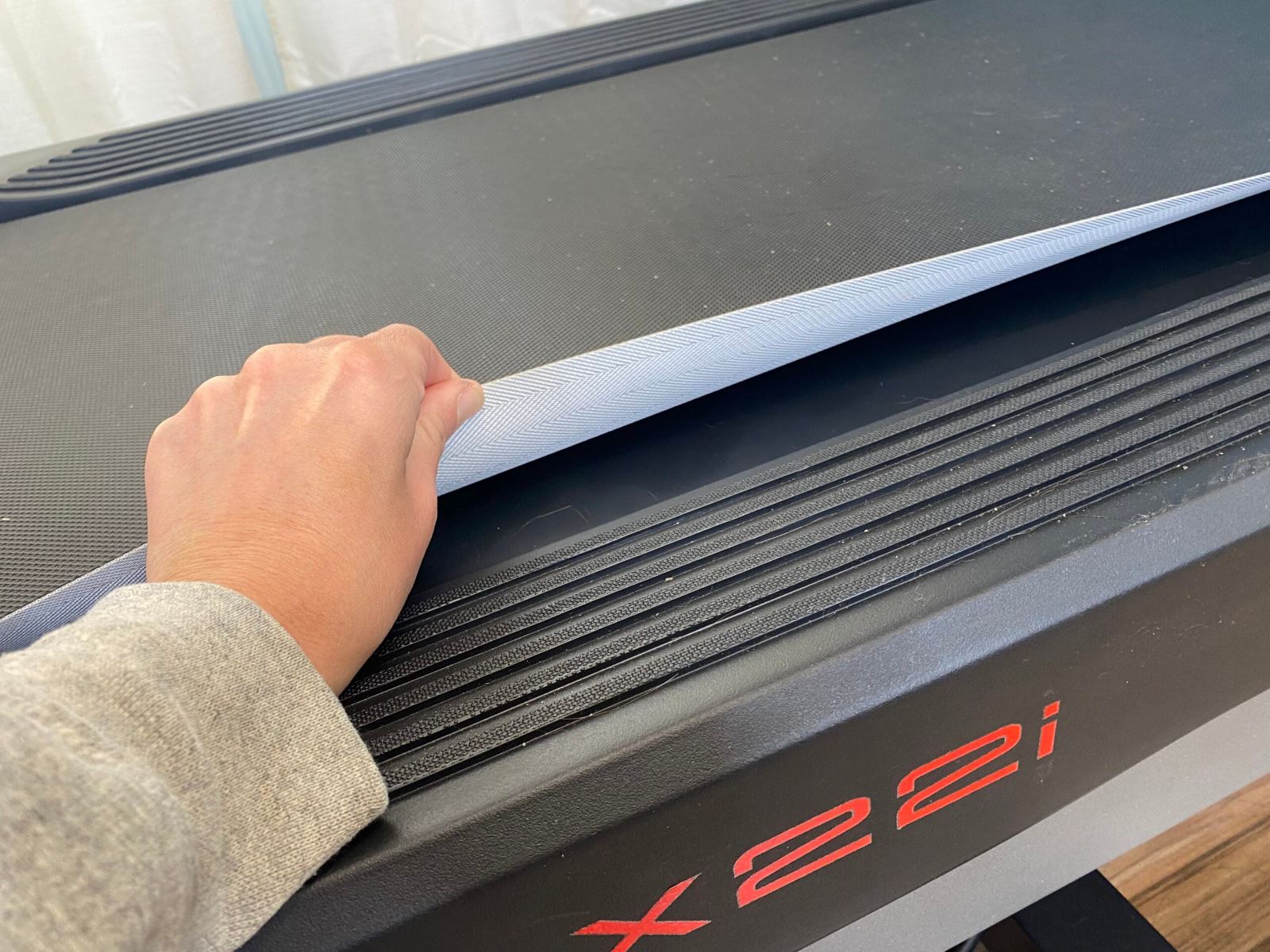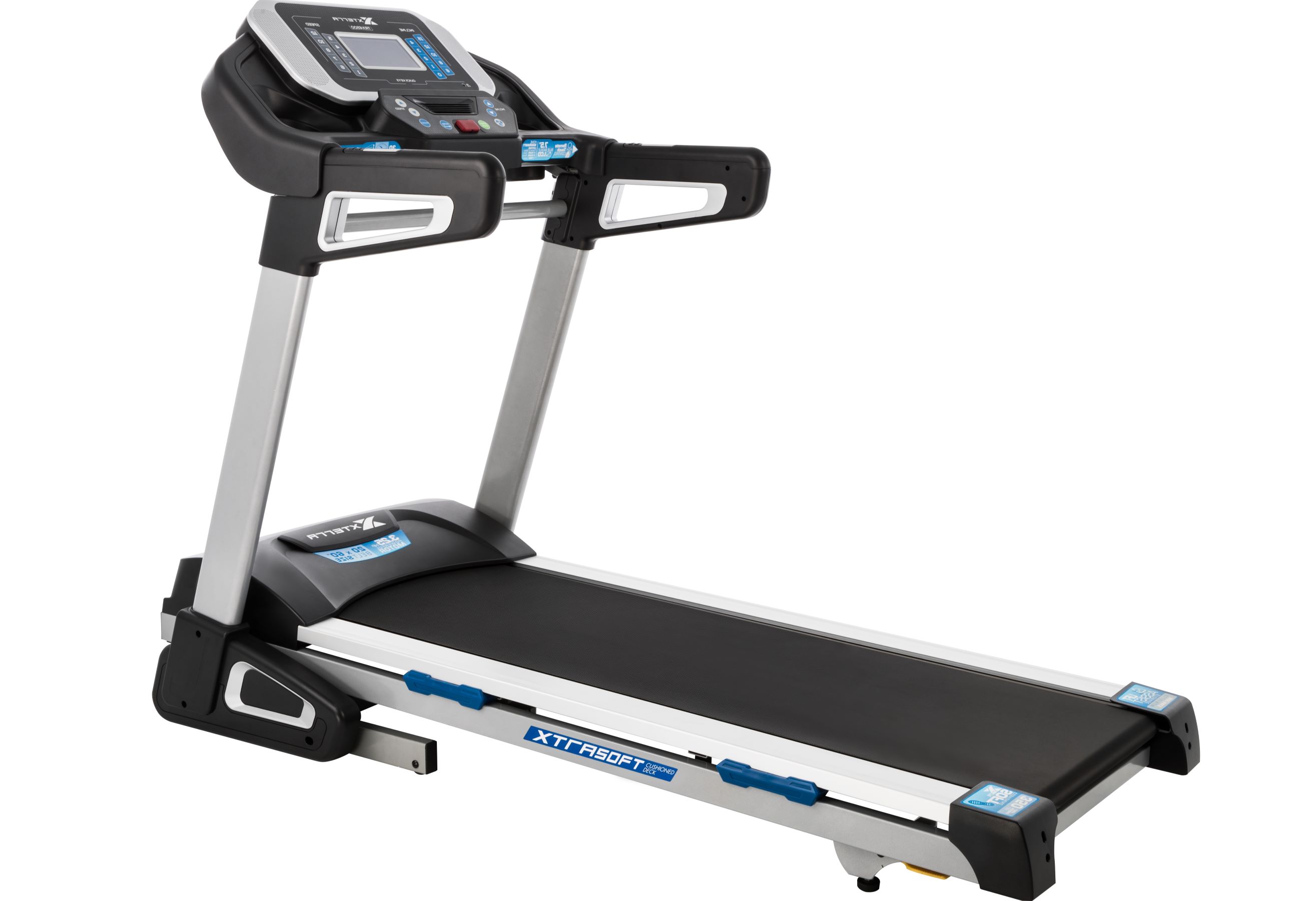

Featured
How To Change A Belt On A Treadmill
Modified: January 2, 2024
Learn how to easily change a belt on a treadmill with our step-by-step guide. Get featured as a fitness expert with this essential skill.
Introduction
Welcome to this comprehensive guide on how to change a belt on a treadmill. Treadmills are a popular piece of exercise equipment for both home and gym use, but over time, the belt can wear out and may need to be replaced. Changing the belt on a treadmill is not a difficult task, but it does require some basic knowledge and a few tools.
Whether you are a fitness enthusiast or a professional in the fitness industry, knowing how to change a treadmill belt can save you time and money. By learning this skill, you can avoid the hassle of calling a technician and waiting for them to fix the problem. Plus, with regular maintenance and belt replacements, you can ensure that your treadmill continues to operate smoothly and safely.
In this step-by-step guide, we will walk you through the process of changing a belt on a treadmill. We will provide you with the necessary safety precautions, tools and equipment needed, and detailed instructions on each step. By the end of this guide, you will be confident in your ability to replace a treadmill belt and keep your machine running smoothly.
Before we dive into the process, it is important to note that different treadmill models may have slight variations in the belt replacement process. It is always recommended to consult your treadmill’s user manual for specific instructions based on your model. However, the general steps outlined in this guide should apply to most treadmills.
Safety Precautions
Prior to changing the belt on your treadmill, it is crucial to take the necessary safety precautions to protect yourself and prevent any potential accidents. Follow these guidelines to ensure a safe working environment:
- Make sure the treadmill is turned off and unplugged before beginning any maintenance or repair work. This will eliminate the risk of electrical shocks or other accidents.
- Wear appropriate protective gear, such as safety glasses and gloves, to protect your eyes and hands from any debris or sharp edges that you may encounter during the belt replacement process.
- If possible, have a second person available to assist you. Some parts of the treadmill can be heavy or difficult to maneuver, and having an extra pair of hands can make the process easier and safer.
- Ensure that the surface you are working on is stable and level. This will prevent any unexpected movements or shifts in the treadmill while you are working on it.
- Read the user manual or manufacturer’s instructions for any specific safety precautions or warnings that are specific to your treadmill model.
- If you are not comfortable with any aspect of the belt replacement process, it is best to consult a professional technician. Trying to tackle a repair beyond your skill level can result in further damage or injury.
By following these safety precautions, you can minimize the risk of accidents and injuries while working on your treadmill. Always prioritize your safety and consult a professional if you are unsure about any step of the process. Now that we have covered the safety precautions, let’s move on to the tools and equipment you will need for the belt replacement process.
Tools and Equipment Needed
Before you begin changing the belt on your treadmill, it is important to gather all the necessary tools and equipment. Having everything on hand will ensure a smooth and efficient process. Here are the tools and equipment you will need:
- Allen wrench set: Most treadmills use Allen wrenches to adjust the belt tension, so having a set of different sizes will allow you to loosen or tighten the bolts as needed.
- Screwdriver: Depending on your treadmill model, you may need a Phillips or flat-head screwdriver to remove certain parts or access the belt.
- Socket wrench set: Some treadmills may use bolts that require a socket wrench. Having a set of socket wrenches in different sizes will ensure that you have the right tool for the job.
- Treadmill belt: You will need a new replacement belt that is compatible with your specific treadmill model. It is recommended to purchase a high-quality belt from a reputable supplier to ensure durability and smooth operation.
- Lint-free cloth: A lint-free cloth will come in handy for cleaning the treadmill deck and removing any debris or dust that may have accumulated.
- Lubricant: Depending on the type of treadmill you have, you may need a silicone or wax-based lubricant to apply to the new belt during installation. Refer to your treadmill’s user manual or manufacturer’s instructions for the recommended lubricant.
Having these tools and equipment readily available will make the process of changing the belt on your treadmill much easier and more efficient. Before you move on to the next step, double-check that you have everything you need. Now that you are equipped with the necessary tools, let’s proceed to the next step: powering off the treadmill.
Step 1: Power Off the Treadmill
The first step in changing the belt on your treadmill is to power off the machine. This ensures your safety and prevents any accidental movement or activation of the treadmill while you are working on it. Follow these steps to power off the treadmill:
- Locate the power switch or button on your treadmill. This is typically located near the console or on the side of the machine.
- Ensure that the treadmill is not in use and the belt is not running.
- Switch off the treadmill by pressing the power switch or button. Wait for the belt to come to a complete stop before proceeding to the next step.
- Unplug the power cord from the electrical outlet to completely cut off the power supply to the treadmill.
- Double-check that the treadmill is completely powered off and disconnected from any power source.
Powering off the treadmill is a crucial first step to ensure your safety while working on the machine. By following these steps, you can prevent any unexpected movements and eliminate the risk of electrical accident. Now that the treadmill is powered off, we can move on to the next step: locating the belt tension adjustment bolts.
Step 2: Locate the Belt Tension Adjustment Bolts
Once you have powered off the treadmill, the next step is to locate the belt tension adjustment bolts. These bolts are responsible for controlling the tension of the treadmill belt. Follow these steps to locate the belt tension adjustment bolts:
- Refer to your treadmill’s user manual or manufacturer’s instructions to identify the location of the belt tension adjustment bolts. Keep in mind that the exact placement may vary depending on your treadmill model.
- Typically, the belt tension adjustment bolts can be found at the rear or front of the treadmill deck. They are usually positioned on both sides of the treadmill.
- Inspect the area around the treadmill deck and look for the bolts. They are usually hexagonal or Allen bolts that can be loosened or tightened to adjust the tension of the belt.
- Once you have located the belt tension adjustment bolts, take note of their position and make sure they are easily accessible for the next steps of the process.
Locating the belt tension adjustment bolts is an essential step in the belt replacement process. These bolts will allow you to loosen the current belt and replace it with a new one. Take your time to familiarize yourself with the location of these bolts before moving on to the next steps. Now that you have located the belt tension adjustment bolts, we can proceed to step 3: loosening the belt tension.
Step 3: Loosen the Belt Tension
With the belt tension adjustment bolts located, it’s time to loosen the tension of the treadmill belt. This step is important to create enough slack in the belt for easy removal. Follow these steps to loosen the belt tension:
- Using the appropriate size Allen wrench or socket wrench, start by loosening the belt tension adjustment bolts on both sides of the treadmill. Turn them counterclockwise to loosen the tension.
- Loosen the bolts gradually, a few turns at a time, to ensure a controlled release of tension. This will prevent any sudden movements or damage to the treadmill.
- As you loosen the bolts, you will notice the tension on the belt decreasing. Keep loosening until you have enough slack in the belt to easily remove it from the treadmill deck.
- Pay attention to the tension on the belt and make sure it is evenly released on both sides. This will help maintain the alignment of the treadmill belt.
It’s important to note that different treadmills may have different belt tension adjustment systems. Some models may have a tension adjustment lever instead of bolts. In these cases, refer to the user manual or manufacturer’s instructions to understand how to loosen the belt tension.
By following these steps, you can effectively loosen the tension of the treadmill belt, making it easier to remove in the next step. Take your time and ensure that the tension adjustment bolts are loosened evenly on both sides. Now that the belt tension has been loosened, we can move on to step 4: removing the old belt.
Step 4: Remove the Old Belt
With the belt tension loosened, it’s time to remove the old belt from the treadmill. Follow these steps to safely remove the old belt:
- Start by lifting one side of the belt off the treadmill deck. You may need to use a flat-head screwdriver or your hands to gently lift it up.
- Continue lifting and pulling the belt towards the opposite side of the treadmill, gradually removing it from the deck. Take care not to force or damage the belt.
- If the belt is stuck or difficult to remove, check for any additional screws or fasteners that may be holding it in place. Remove these screws or fasteners using a screwdriver or appropriate tools.
- Once the belt is completely off the treadmill deck, carefully set it aside. Inspect the belt for any signs of wear or damage that may indicate the need for a replacement.
- Use a lint-free cloth to clean the treadmill deck, removing any dust, debris, or residue that may have accumulated. This will ensure a clean and smooth surface for the new belt.
When removing the old belt, it’s important to be patient and gentle. Avoid applying excessive force or pulling at the belt too forcefully, as this can damage the treadmill deck or other components. Take your time and ensure that the belt is fully detached before moving on to the next step.
With the old belt removed, we are ready to move on to step 5: installing the new belt on the treadmill.
Step 5: Install the New Belt
Now that the old belt has been removed, it’s time to install the new belt on your treadmill. Follow these steps to properly install the new belt:
- Take the new treadmill belt and position one end of it on the treadmill deck, aligning it with the edges and ensuring it is centered.
- Gently unroll the belt across the treadmill deck, making sure it is straight and free from any twists or folds.
- If there are any alignment marks on the treadmill deck or the new belt, use them as a guide to ensure proper alignment. This will help prevent any issues with the belt slipping or running off center.
- Once the new belt is positioned correctly, find the belt tension adjustment bolts on both sides of the treadmill. Gradually tighten the bolts clockwise to increase the tension on the belt.
- As you tighten the bolts, make sure the tension is even on both sides of the belt. This will help maintain proper alignment and prevent excessive wear on one side.
- Continue tightening the bolts until the new belt feels snug and has a slight resistance when pulled with moderate force. Be careful not to overtighten, as this can cause unnecessary strain on the motor and other components.
It’s important to note that the tension on the treadmill belt should be adjusted according to the manufacturer’s specifications. Consult your treadmill’s user manual or manufacturer’s instructions for specific guidelines on the belt tension setting.
By following these steps, you can successfully install the new belt on your treadmill. Take your time and make sure the belt is properly aligned and tensioned before moving on to the next step. Now that the new belt is installed, we can proceed to step 6: adjusting the belt tension.
Step 6: Adjust the Belt Tension
After installing the new belt, it’s important to properly adjust the tension to ensure optimal performance and longevity. Follow these steps to adjust the belt tension on your treadmill:
- Start by standing at the end of the treadmill belt and placing your foot in the center of the belt.
- Carefully lift the treadmill belt up with your foot until it is raised about 3-4 inches off the deck. The belt should have a slight tension but still be easy to lift.
- While holding the belt in this raised position, find the belt tension adjustment bolts on both sides of the treadmill.
- Using the appropriate size Allen wrench or socket wrench, make small adjustments to the belt tension bolts. Turn them clockwise to increase tension or counterclockwise to decrease tension as needed.
- Continue making minor adjustments to achieve the desired tension. It’s important to find the right balance – not too loose or too tight.
- As you make adjustments, periodically lower the belt and walk on the treadmill for a few minutes to test the tension and alignment. Pay attention to any slipping or misalignment issues.
- If necessary, make further adjustments until the belt feels firm and secure, with no slipping or excessive vibrations during use.
Remember, proper belt tension is crucial for a smooth and safe workout experience. Having the belt too loose can cause slipping or jerking movements, while having it too tight can strain the motor and other components. Take your time and make incremental adjustments to achieve the ideal tension.
Once you have adjusted the belt tension to your satisfaction, we can move on to step 7: testing the belt alignment.
Step 7: Test the Belt Alignment
After adjusting the tension, it’s important to test the alignment of the treadmill belt. A properly aligned belt ensures smooth and consistent movement during your workouts. Follow these steps to test the belt alignment:
- Stand at the end of the treadmill belt and observe its alignment with the edges of the treadmill deck.
- Visually inspect the belt and make sure it is centered and straight, with an equal gap on both sides.
- Start the treadmill at a low speed and walk on it for a few minutes, paying attention to any unusual movements or vibrations.
- Observe the belt as it moves and check if it stays centered and aligned during your walk. It should not veer to one side or rub against the edges of the deck.
- If you notice any misalignment or rubbing, stop the treadmill and make further adjustments to the belt tension as needed.
- Repeat the process of testing the belt alignment and making adjustments until the belt runs smoothly and stays aligned without any issues.
Proper belt alignment not only ensures a comfortable workout experience but also helps prevent premature wear and tear on the belt and other treadmill components.
If you are having difficulty achieving proper belt alignment, refer to your treadmill’s user manual or manufacturer’s instructions for specific guidance. Some treadmills may have additional features or mechanisms for aligning the belt.
Once you are satisfied with the alignment of the treadmill belt, you are ready to move on to the final step: powering on the treadmill.
Step 8: Power On the Treadmill
With the belt tension adjusted and the alignment tested, it’s time to power on the treadmill and ensure that everything is functioning correctly. Follow these steps to power on the treadmill:
- Make sure the power cord is securely plugged into an electrical outlet.
- Locate the power switch or button on the treadmill.
- Switch on the treadmill by pressing the power switch or button.
- Allow the treadmill to go through its startup sequence, which may involve the display lighting up and the console initializing.
- Once the treadmill is powered on, check that the belt is moving smoothly and without any unusual noise or vibrations.
- Step onto the treadmill and test the belt at a slow speed, gradually increasing the speed as you feel comfortable.
- Pay attention to the belt’s movement and ensure that it remains centered and aligned as you walk or run on the treadmill.
- If you notice any issues with the belt or other components, such as slipping, rubbing, or unusual sounds, power off the treadmill and recheck the alignment and tension adjustment.
Powering on the treadmill allows you to verify that the belt is properly installed and functioning as expected. It’s essential to carefully observe the belt’s movement and listen for any abnormal noises during the test run.
If everything appears to be in order and the belt is running smoothly, congratulations! You have successfully changed the belt on your treadmill. Regular maintenance and periodic belt replacements will help ensure the longevity and performance of your treadmill.
Remember to consult your treadmill’s user manual or manufacturer’s instructions for any specific maintenance recommendations or guidelines for your particular model.
By following these steps and taking the necessary precautions, you can confidently change the belt on your treadmill, saving time and money by doing it yourself. Enjoy your workouts on your newly replaced treadmill belt!
Conclusion
Congratulations! You have successfully learned how to change a belt on a treadmill. By following the step-by-step guide, you have gained the knowledge and skills to maintain and replace the belt on your treadmill, ensuring its optimal performance and longevity.
We began by emphasizing the importance of safety precautions, including powering off the treadmill and wearing appropriate protective gear. We then discussed the essential tools and equipment you need for the belt replacement process, including Allen wrenches, screwdrivers, and a new treadmill belt.
Throughout the process, we covered each step in detail, from powering off the treadmill to removing the old belt, installing the new belt, adjusting the belt tension, testing the belt alignment, and finally, powering on the treadmill to ensure everything is functioning correctly.
Remember, each treadmill model may have slight variations in the belt replacement process, so always refer to your user manual or manufacturer’s instructions for specific guidelines. It is also important to regularly maintain and inspect your treadmill to identify any signs of wear or damage before they become more severe.
By taking the time to properly care for your treadmill and replacing the belt when needed, you can ensure a smooth and safe exercise experience. Regular maintenance will not only extend the lifespan of your treadmill but also provide you with a reliable and enjoyable workout for years to come.
Keep in mind that if you ever feel unsure or uncomfortable about any step of the process, it is always best to consult a professional technician who can assist you. Your safety is paramount, and it’s better to seek expert help than risk causing further damage or injury.
Now that you have successfully changed the belt on your treadmill, enjoy your workouts with confidence and keep up the good work in maintaining your fitness equipment!









